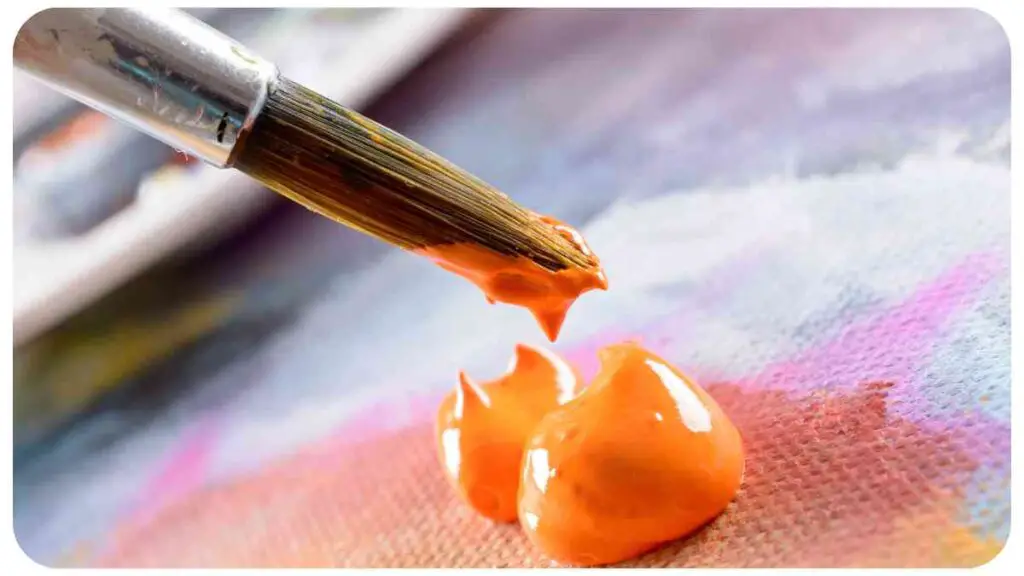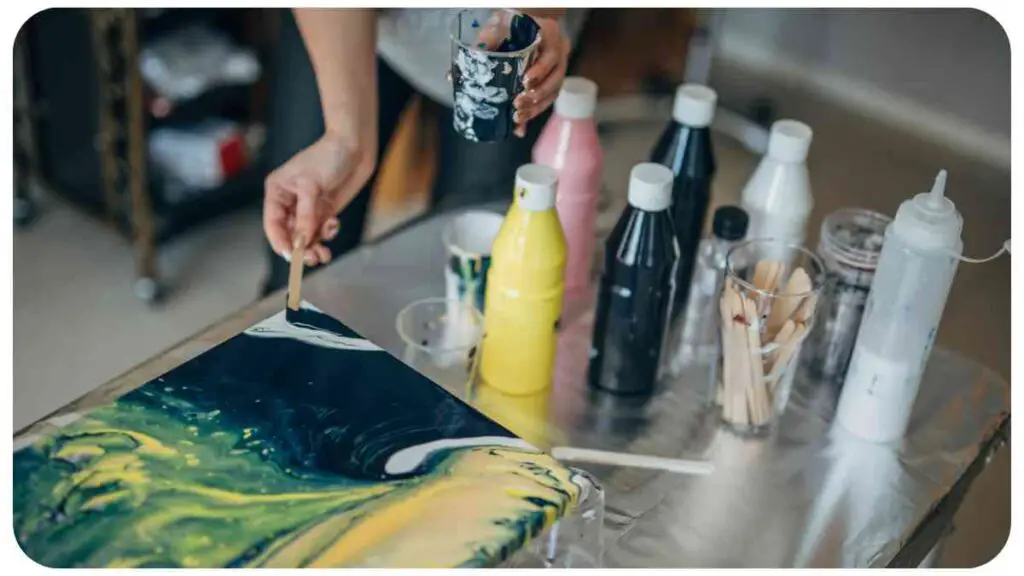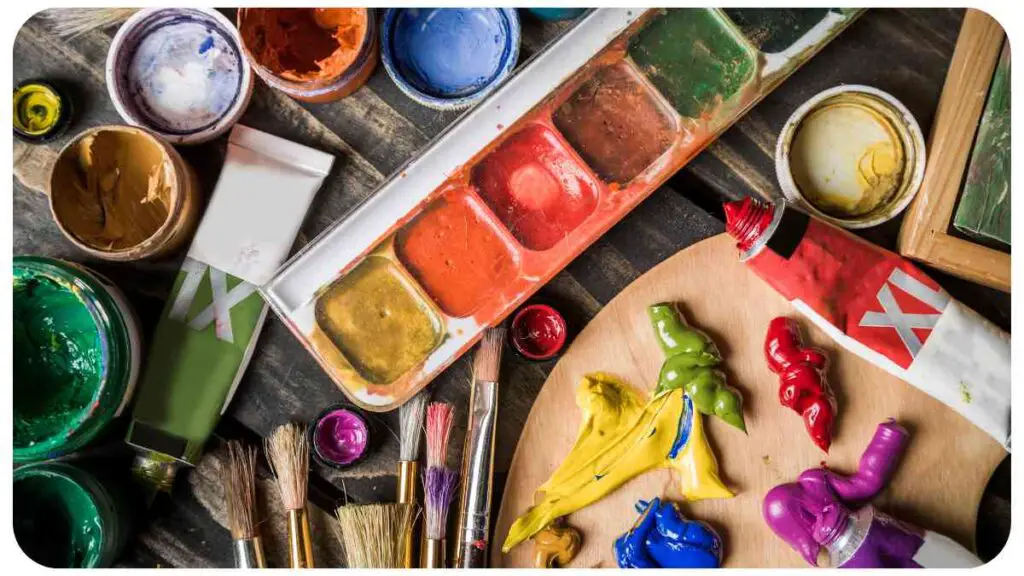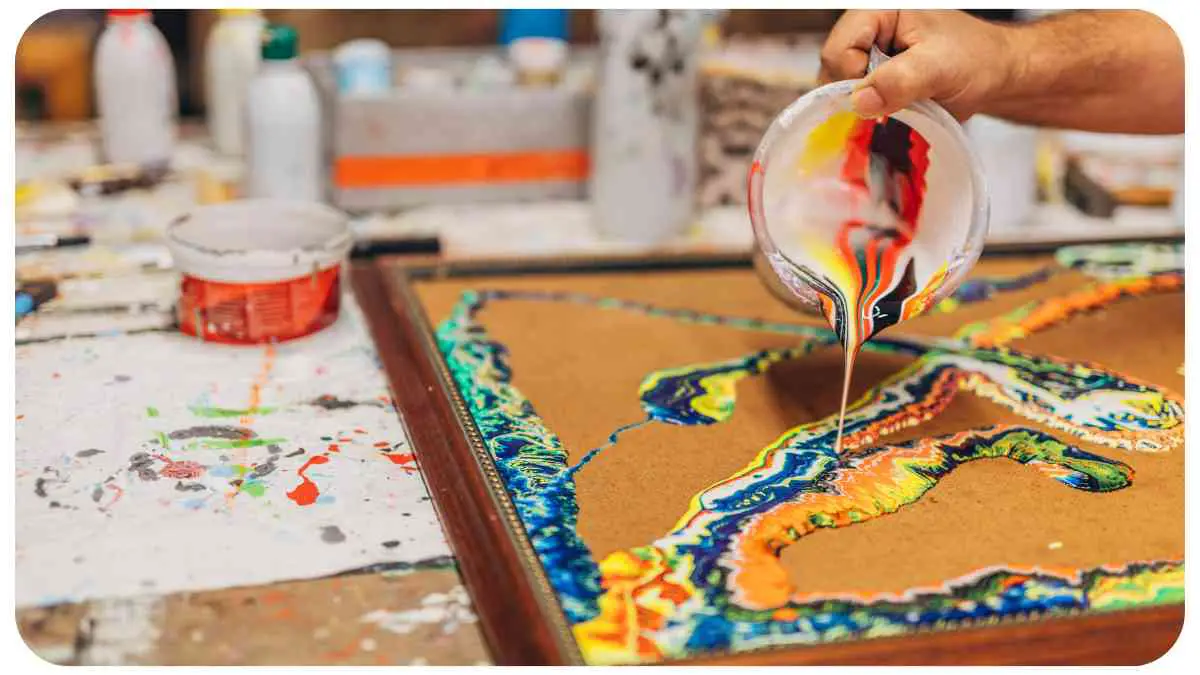Welcome to a journey through the fascinating timeline of acrylic paint. In this article, we will explore the evolution of this versatile medium, its impact on the art world, and the many benefits it brings to artists of all levels.
With its vibrant colors, fast-drying properties, and wide array of techniques, acrylic paint has become a staple in the artistic toolkit. Let’s delve into the enthralling history and delve deeper into the wonders of acrylic paint.
| Takeaways |
|---|
| 1. Acrylic paint offers versatility in style and technique. |
| 2. It can be used on various surfaces, including canvas, wood, and even fabric. |
| 3. Acrylic paint has been embraced by art movements like Pop Art and Abstract Expressionism. |
| 4. Several brands offer different product lines tailored to specific needs and effects. |
| 5. Artists can explore techniques such as color mixing, creating texture, and layering. |
| 6. Proper storage and care are essential for preserving acrylic paintings. |
| 7. Cleaning can be done with gentle methods, and professional guidance may be necessary. |
| 8. Acrylic paint has found its place in contemporary art and continues to evolve. |
| 9. Acrylic artists like Gerhard Richter and Takashi Murakami inspire with their unique approaches. |
| 10. Acrylic paint allows for trends like Abstract Expressionism, mixed media, and hyperrealism. |
| 11. Additional resources, like YouTube tutorials, provide further guidance and inspiration. |
| 12. FAQs cover topics such as mixing paints, thinning, cleaning brushes, and adding varnish. |
2. Origins and Early Development
2.1 The Invention of Acrylic Paint

Just like masterpieces, great inventions often stem from moments of serendipity. The story of acrylic paint begins in the early 20th century when a chemist named Otto Röhm accidentally discovered polymethyl methacrylate, or PMMA, a versatile plastic.
It wasn’t until the 1940s that a young artist named Leonard Bocour recognized the potential of this substance as a pigment binder and teamed up with a fellow chemist, Sam Golden, to develop what we now know as acrylic paint.
When it comes to choosing the right scrapbooking supplies, it’s all about finding the perfect materials.” Learn more about choosing the right scrapbooking supplies to enhance your craft projects.
2.2 Initial Challenges and Advancements
In its early days, acrylic paint faced numerous challenges. Its fast drying time made blending difficult, limiting artists’ ability to work with the medium effectively. However, continuous improvement efforts led to the development of retarders, which slowed down the drying process and provided artists with more control over their creations.
This breakthrough opened the floodgates for experimentation and innovation in the world of acrylic painting.
3. Acrylic Paint vs. Traditional Oil Paint
3.1 Comparing Characteristics
Acrylic paint differs from traditional oil paint in several ways. While oil paint is made with pigments suspended in oil, acrylic paint uses pigments suspended in a water-based emulsion.
This water-based nature of acrylic paint allows for easy cleanup with water, whereas oil paint requires solvents like turpentine or mineral spirits. Additionally, acrylic paint dries significantly faster, allowing artists to work more efficiently.
3.2 Benefits of Acrylic Paint
The advantages of acrylic paint extend beyond its quick drying time. It offers excellent color retention, as the pigment particles are not prone to yellowing or fading. Acrylic paint also boasts flexibility and durability, with the ability to withstand various environmental conditions.
Its versatility allows for a wide array of applications, from traditional canvas painting to mixed media art, murals, and even sculpture.
To give you a clearer understanding of the comparison between acrylic paint and traditional oil paint, let’s refer to the table below.
Table 3.2.1: A Comparison Between Acrylic and Oil Paint
| Characteristics | Acrylic Paint | Oil Paint |
| Drying Time | Fast | Slow |
| Cleanup | Water | Solvents (e.g., turpentine) |
| Color Retention | Excellent | Can yellow or fade over time |
| Flexibility | High | Low |
| Durability | High | High |
| Versatility | Wide range of applications | Primarily canvas painting |
4. The Growth and Popularity of Acrylic Paint
4.1 A Versatile Medium
Acrylic paint’s versatility played a significant role in its growing popularity among artists. Its adaptability allowed artists to explore various styles and techniques, from realistic to abstract, and everything in between.
Artists found that they could achieve different effects by diluting the paint with water, creating transparent glazes or using it undiluted for bold, vibrant strokes. Additionally, acrylic paint can be used on a wide range of surfaces, including canvas, wood, paper, plastic, and even fabric, expanding the possibilities for artistic expression.
“Unlock your creativity and try these beginner-friendly scrapbooking techniques.” Explore 15 easy scrapbooking techniques for stunning and personalized scrapbooks.
4.2 Acrylic Paint in Modern Art Movements

As acrylic paint gained traction over the years, it also became intertwined with various art movements. Pop art, with its bold colors and graphic style, embraced the vibrant nature of acrylics. The ability to quickly layer and create textures made it an ideal medium for abstract expressionists. Acrylics also found their place in street art, thanks to their durability and resistance to weathering.
The table below will provide an overview of some of the notable art movements and styles in which acrylic paint has played a significant role.
Table 4.2.1: Acrylic Paint and Modern Art Movements
| Art Movement/Style | Description |
| Pop Art | A movement that emphasized popular culture and consumerism, characterized by vibrant colors and bold, graphic representations |
| Abstract Expressionism | Non-representational art that conveyed emotions through the use of bold brushwork, textures, and spontaneous, gestural marks |
| Street Art | Artistic expressions in public spaces, often created with spray paint and incorporating various techniques and messages |
5. Innovations in Acrylic Paint Technology
5.1 Brands and Product Lines
Throughout the years, several brands have emerged as leaders in acrylic paint production, each with its unique characteristics and qualities. Some notable brands include Golden, Liquitex, and Winsor & Newton.
These brands offer a wide range of colors, varying viscosities, and specialized product lines tailored to specific techniques or effects. Working with trusted brands ensures the quality and reliability of the paint, contributing to the overall experience of the artist.
“Discover the secrets to mastering the art of scrapbooking and take your projects to the next level.” Check out our guide on 10 secrets to mastering the art of scrapbooking to unleash your creativity.
Let’s take a look at the table below for an overview of some renowned acrylic paint brands and their product lines.
Table 5.1.1: Acrylic Paint Brands and Product Lines
| Brand | Product Line | Description |
| Golden | Heavy Body Acrylics | A line of highly pigmented, thick-bodied acrylic paints ideal for impasto techniques and brush application |
| Liquitex | Basics Acrylics | Entry-level acrylic paints with a smooth consistency, suitable for artists of all levels |
| Winsor & Newton | Professional Acrylics | A range of high-quality acrylic paints offering exceptional color strength, permanence, and lightfastness |
5.2 Specialized Acrylic Paints
Beyond the standard acrylic paint lines, artists can also explore specialized formulations that cater to specific needs. These specialized acrylic paints include:
- Acrylic Ink: A fluid acrylic formulation that provides intense, transparent colors for fine detail work or ink-like effects.
- Acrylic Spray Paint: Aerosol acrylic paints that allow for quick application and coverage, making them popular in street art and large-scale murals.
- Acrylic Pouring Medium: A specially formulated medium that creates cells, lacing, and other unique effects when combined with acrylic paint and poured onto a surface.
6. Techniques and Application Tips
6.1 Mixing Colors and Creating Texture
One of the joys of working with acrylic paint is the ability to mix colors and create unique palettes. By blending different shades and hues, artists can achieve a wide range of color variations and tones. When mixing acrylic paints, it’s essential to start with lighter colors and gradually add darker ones to achieve the desired shade. It’s also helpful to have a color chart or swatch reference to ensure consistency in future works.
Acrylic paint also offers great potential for creating texture in artworks. Artists can use various techniques, such as impasto (thick application of paint), dry brushing, sgraffito (scratching into the paint surface), or applying mediums like gels or pastes to add texture and depth to their paintings. This texture adds visual interest and tactile appeal to the artwork.
“Stay up-to-date with the latest trends in scrapbooking and make your projects stand out.” Find out what you need to know about the top scrapbooking trends of the year to create unique and stylish crafts.
6.2 Layering and Blending Techniques
Layering is another valuable technique in acrylic painting. By layering colors, artists can create depth and dimension in their artwork. This technique involves applying multiple transparent or translucent layers of paint, allowing each layer to dry before adding the next.
Each layer builds upon the previous one, resulting in a rich and captivating visual effect. Artists can also experiment with blending techniques, such as wet-on-wet or wet-on-dry, to achieve smooth transitions and seamless color gradations.
Furthermore, acrylic paint can be used alongside other mediums, such as pencils, pastels, or collage materials, for mixed media artworks. This combination of different materials provides endless creative possibilities and allows artists to achieve unique visual effects.
Refer to the table below for a summary of techniques and application tips for acrylic paint.
Table 6.2.1: Acrylic Painting Techniques and Tips
| Technique | Description |
| Color Mixing | Blending different shades and colors to create a customized palette |
| Creating Texture | Using various techniques and mediums to add texture and depth to the artwork |
| Layering | Building up transparent or translucent layers to create depth and dimension |
| Blending | Techniques for achieving smooth transitions and seamless color gradations |
| Mixed Media | Incorporating other materials, such as pencils, pastels, or collage elements, to expand creative possibilities |
7. Preservation and Maintenance
7.1 Proper Storage and Care
To ensure the longevity of acrylic paintings, it’s essential to store them properly. Acrylic paintings should be stored in a dry and cool environment, away from direct sunlight or extreme temperatures. Ideally, artworks should be framed or stored in acid-free archival sleeves to protect them from dust, moisture, and UV damage.
7.2 Cleaning and Conservation
Cleaning acrylic paintings is relatively straightforward. To remove dust or dirt, gently brush the surface using a clean, soft brush or microfiber cloth. If the painting requires more thorough cleaning, a mild solution of water and gentle soap can be used.
It’s important to avoid excessive scrubbing or using harsh chemicals, as these can damage the paint surface. If in doubt, it’s best to consult a professional conservator to ensure proper cleaning and maintenance procedures.
Refer to the table below for quick preservation and maintenance tips for acrylic paintings.
“Create beautiful albums and journals with our step-by-step guide to DIY scrapbooking.” Dive into the world of DIY scrapbooking and learn how to create your own albums and journals for treasured memories.
Table 7.2.1: Acrylic Painting Preservation and Maintenance
| Tip | Description |
| Proper Storage | Store acrylic paintings in a dry and cool environment, away from direct sunlight or extreme temperatures |
| Framing or Archival Sleeves | Frame paintings or store them in acid-free archival sleeves to protect from dust, moisture, and UV damage |
| Gentle Cleaning | Remove dust and dirt by gently brushing the surface with a clean, soft brush or microfiber cloth. Use mild soap and water for more thorough cleaning |
| Professional Consultation | If unsure about cleaning or maintenance, seek advice from a professional conservator to ensure proper procedures are followed |
8. Acrylic Paint in Contemporary Art
8.1 Inspirational Acrylic Artists
Acrylic paint has gained immense popularity among contemporary artists, and many renowned artists have embraced it as their preferred medium. Here are a few influential acrylic artists who have made a significant impact on the art world:
- Gerhard Richter: Known for his abstract and photorealistic paintings, Richter often combines acrylic paint with other media to create complex and compelling artworks.
- Beatriz Milhazes: Milhazes utilizes vibrant colors and intricate patterns in her acrylic paintings, creating visually captivating compositions with influences from Brazilian culture.
- Takashi Murakami: Murakami’s colorful and bold artworks often combine traditional Japanese art styles and contemporary pop culture, showcasing the versatility of acrylic paint.
8.2 Modern Trends and Approaches

In contemporary art, artists continue to push the boundaries of acrylic paint, exploring new techniques, styles, and approaches. Some of the notable trends and approaches in acrylic painting include:
- Abstract Expressionism: Artists experiment with bold and gestural brushwork, often using acrylic paint’s quick-drying properties to create expressive and dynamic abstract compositions.
- Mixed Media and Collage: Acrylic paint is commonly used alongside other materials to create mixed media artworks, combining different textures and elements for added depth and dimension.
- Hyperrealism: Acrylic paint allows artists to achieve incredible detail and realism, working layer by layer to create highly detailed and lifelike paintings.
The continuous evolution of acrylic paint and its versatility have enabled artists to explore new artistic territories and create captivating works that inspire and challenge viewers.
Conclusion
The journey of acrylic paint from its accidental discovery to its widespread use in the art world has been an exciting one. Over time, acrylic paint has proved to be a valuable medium for artists, offering quick drying times, vibrant colors, and a wide range of techniques and applications.
Its adaptability to various styles and surfaces, combined with technological advancements and innovations, have solidified its place as a staple in the artistic realm. Whether you’re a beginner or an established artist, acrylic paint opens the door to endless creative possibilities. So grab your brush, mix your colors, and let your imagination flow with acrylic paint!
Further Reading
Here are some additional resources you can explore to learn more about acrylic painting techniques, tips, and inspiration:
Acrylic Painting Techniques: Learn How to Paint with Acrylics: This video tutorial provides an overview of various acrylic painting techniques, including blending, layering, and creating texture.
Acrylic Pouring for Beginners: Fluid Painting Tutorial: If you’re interested in acrylic pouring, this tutorial offers step-by-step instructions and tips for creating stunning fluid art.
Acrylic Landscape Painting Tutorial for Beginners: Dive into the world of landscape painting with acrylics in this beginner-friendly tutorial that covers essential techniques and composition tips.
FAQs
Can I mix acrylic paint with other types of paint?
Yes, acrylic paint can be mixed with other types of paint, including oils or watercolors. However, it’s important to consider the properties of the paint you are mixing and how they may interact. Test the compatibility and adhesion of the paints on a small surface before applying them to your artwork.
How do I thin acrylic paint for a more transparent effect?
To achieve a more transparent effect with acrylic paint, you can dilute it with water or use a specialized acrylic medium, such as a glazing medium or flow improver. Start with a small amount of water or medium and gradually add it to the paint until you reach the desired transparency.
How can I prevent acrylic paint from drying too quickly on my palette?
To extend the working time of acrylic paint on your palette, consider using a palette with a lid or cover it with a damp cloth or palette seal. You can also spray a fine mist of water over the paint to keep it moist. Additionally, using a stay-wet palette or a palette with a built-in reservoir can help keep the paint workable for longer periods.
How do I clean acrylic paintbrushes?
To clean acrylic paintbrushes, rinse them thoroughly with water immediately after use. Gently massage the bristles with your fingers, working out any paint residue. If the paint has dried, you can use a mild soap or brush cleaner. Rinse the brushes again until the water runs clear, reshape the bristles, and let them air dry.
How can I add varnish or protective coating to my acrylic paintings?
After your acrylic painting has thoroughly dried (typically after a few weeks), you can apply a varnish or protective coating to enhance its durability and appearance. Use a varnish specifically designed for use with acrylic paint, and follow the instructions provided by the manufacturer. Apply the varnish in thin, even coats, allowing each layer to dry before applying the next.

Hellen James is the creator of Unified Crafts and has been crafting since she was a kid accompanied by her mom to the craft store, where she was free to choose whatever ignited her imagination.

